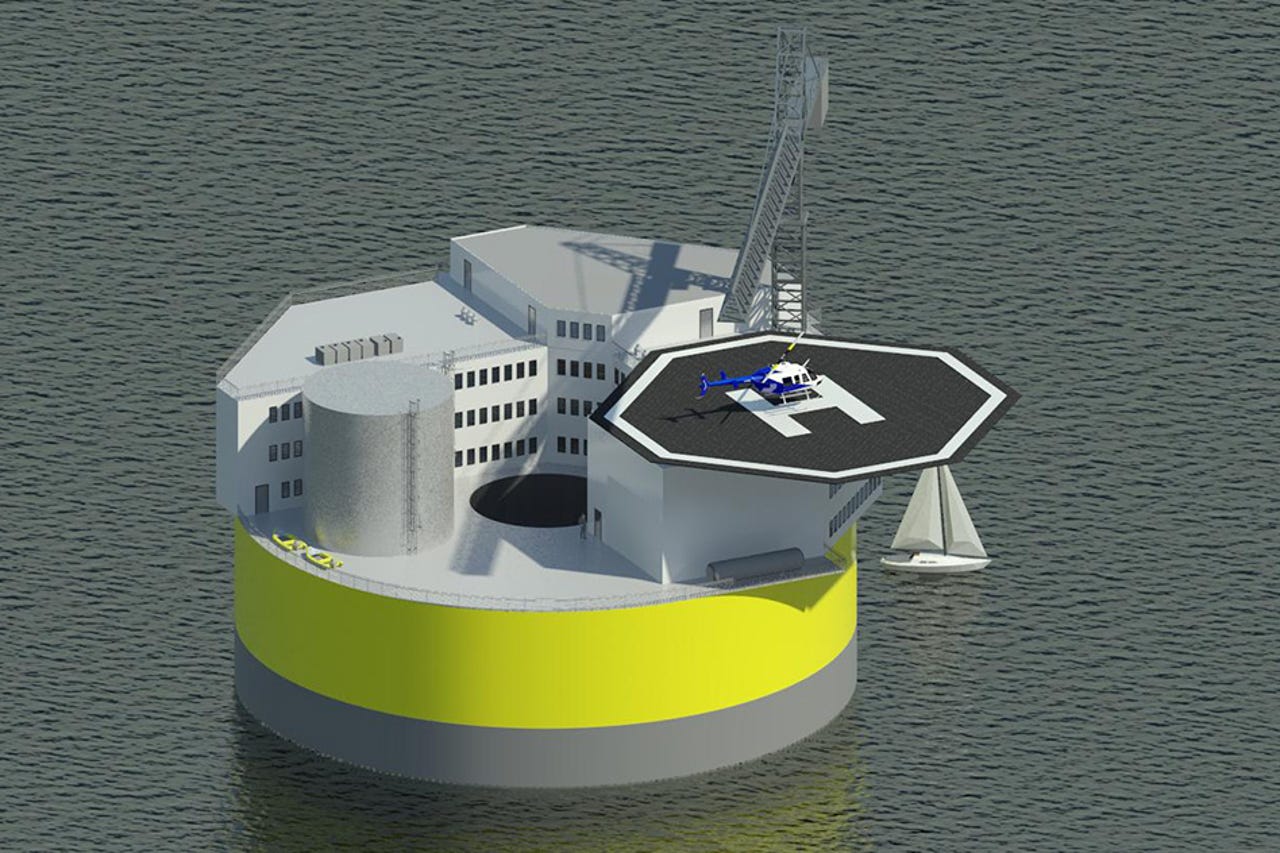Innovation
Floating nuclear power plant could resist meltdowns
Modeled after offshore oil drilling platforms, the floating design would be automatically cooled by the surrounding seawater.


Modeled after platforms used for offshore oil drilling, the floating power plant will be located five to seven miles at sea and, in emergencies, could be automatically cooled by the surrounding water -- preventing fuel rods from melting and radioactive material from escaping.
The plant could be built in a shipyard, then towed to its offshore destination. There, it’ll be anchored to the seafloor (over 300 feet deep) and connected to land via an underwater electric transmission line. It'll include living quarters and a helipad, and when the time comes to decommission the plant, it can simply be towed away to a central facility, the way Navy carriers and submarine reactors are now.
Overheating and potential meltdown -- the biggest issues faced by Fukushima, Chernobyl, and Three Mile Island -- would be virtually impossible at sea. The ocean, MIT’s Jacopo Buongiorno explains in a news release, “is essentially an infinite heat sink.” The light-water nuclear reactor will be located underwater, and its containment vessel will be surrounded by a compartment flooded with seawater. This allows for passive cooling with no intervention, even during worst case scenarios.
Another advantage, Buongiorno adds: “The ocean is inexpensive real estate.” To provide cooling water, new sites for future nuclear plants must all be next to an ocean, lake, river, or other such desirable shorefront property. Offshore plants can be out of sight of land, but still adjacent to the population centers they’d serve. And in the event of an accident, people wouldn’t be forced to evacuate.
There are also no particular limits to the size of these floating plants, which can range from small, 50-megawatt plants to 1,000-megawatt plants like today’s largest facilities. Buongiorno sees a market in places like Japan, Indonesia, or Chile -- countries with high tsunami risks, but also rapidly growing needs for new power sources. The team's industry partners include Chicago Bridge and Iron.
The concept was presented at the Small Modular Reactors Symposium hosted by the American Society of Mechanical Engineers last week.
[Via MIT News Office]
Images: Jake Jurewicz/MIT-NSE
Related on SmartPlanet:
This post was originally published on Smartplanet.com